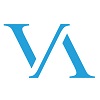
Animation programs are not what they used to be—and that’s a good thing. Many of today’s programs are designed to prepare graduates for careers in so many areas outside of film and television you’ll lose count. Advertising, game design and development, public relations, marketing, web design, art direction, mobile apps, education, exhibitions, and even mathematical modeling and forensics are just a few. Because animation skills are valued in so many competitive industries today, pioneering animation programs seem to be popping up everywhere—even in exotic places such as South Africa.
In 2017 alone, dozens of programs leading to everything from a certificate to a master’s degree launched around the world, with schools such as Vermont College of Fine Arts, Michigan State University, Memphis College of Art, University of Technology Sydney, Embry-Riddle Aeronautical University, Indiana University Bloomington, and University of Edinburgh (UK) leading the pack. Now, several other schools across the U.S. and overseas have joined the club and all are making headlines around the globe.
We are excited to announce that Kendall College of Art and Design of Ferris State University (KCAD) and the Royal College of Art (RCA) have launched several new programs for animators. The last time we checked, both schools were accepting applications for 2018. And two other schools, Vancouver Animation School (VANAS) and SAE Institute – Cape Town, are set to celebrate the anniversary of several new programs that should be on every aspiring animator’s radar. Read on.
 Kendall College of Art and Design of Ferris State University – Grand Rapids, Michigan
Kendall College of Art and Design of Ferris State University – Grand Rapids, Michigan
Kendall College of Art and Design of Ferris State University (KCAD) has launched a new Bachelor of Fine Arts (BFA) in Digital Art and Design. “An evolution of the former Digital Media program, Digital Art and Design provides immersive learning experiences across a wide range of digital media in two focus areas—Entertainment Arts and Multimedia Design—preparing students to pursue a wide variety of career opportunities,” says the school.
The first half of the program “blends these two focus areas together, broadly exploring the intersection of graphic design, interaction design, animation, illustration, digital 3D, and sound design. The second half gives students the opportunity to delve deeply into the area that best aligns with their skills and interests.” The Entertainment Arts focus requires courses such as Animation and Motion Graphics, Interactive Multimedia Design, Digital 3D, and Digital Imaging, while the Multimedia Design focus requires courses such as 2D Character Animation, 3D Game Art, Motion Design, Comic Media Design, Interaction Design, Storyboard Art, and Web Design.
“Each focus area culminates in two Professional Studio courses where students work collaboratively with each other as well as with outside organizations in real-world learning experiences that mirror industry realities.” All students will receive hands-on experiences via “high-end equipment and on-campus facilities, as well as access to the Dow Center FlexLab, KCAD’s state-of-the-art digital fabrication facility.” Other program highlights include access to industry interactions, guest speakers, design forums, and other events hosted by Design West Michigan, a KCAD organization that explores and advocates for design as an economic building block in the region.
Graduates of the KCAD BFA in Digital Art and Design program will be well prepared to compete for positions in 2D Animation, 3D Game Art, Visual Development, Interaction Design, and Motion Design.
Kendall College of Art and Design of Ferris State University was established in 1928. The school opened its doors on March 1, 1931 with just 35 art students. Today, KCAD is home to more than 1,200 students enrolled in several dozen master’s, BFA, and Bachelor of Science (BS) programs. Just a few include Collaborative Design, Medical Illustration, Drawing, Architecture, and Digital Media.
Kendal College of Art and Design of Ferris State University is accredited by the Higher Learning Commission of the North Central Association of Colleges and Schools (HLC NCA), the National Association of Schools of Art and Design (NASAD), and the Council for Interior Design Accreditation (CIDA).
 Royal College of Art – London, UK
Royal College of Art – London, UK
Royal College of Art (RCA) has launched a new Digital Direction Master of Arts (MA) that will focus on Media and Storytelling in the Digital Era. Based within RCA’s School of Communication, this unique program requires 240 credit hours of study to be completed over a 15-month period. Per the school, the program will “center on the interrelated domains of broadcasting, film and experience, it will address emerging issues in contemporary digital communication and the creative economy. Students will gain a deep understanding of critical, experimental communication design, media production and content creation, alongside developing the ability to respond to continually changing contexts, infrastructures and technologies.”
The “one-of-a-kind” Digital Direction MA was designed to attract students from Animation, Interaction Design, Filmmaking, and more. The program welcomed its very first students in September 2017. They will complete the program in December 2018.
Founded in 1837, the Royal College of Art is the world's longest-running postgraduate college of art and design. The school serves more than 1,600 students across six schools including Architecture, Communication, Design, Fine Art, Humanities, and Material. RCA students come from more than 60 countries around the world.
 Vancouver Animation School – Vancouver, BC Canada
Vancouver Animation School – Vancouver, BC Canada
In 2015, Vancouver Animation School (VANAS) launched a first-of-its-kind specialized Diploma in Digital Matte Painting. The school says it developed the program in response to the strong demand for digital matte painters around the world. Per the school, “the curriculum is an industry standard that implements the process and pipeline used at the Moving Picture Company (MPC).” Sample courses include 2D Foundations, Advanced Matte Painting, 3D Software Foundations for Matte Painters (Nuke, Maya) and Business and Job Development.
Students in the full-time online program will complete 20 hours per week including live classes and online activities with a total duration of 990 hours delivered in 12 months (four-term intensive). Classes for the upcoming semester will begin January 8, 2018. Applications are being accepted through November 30.
Established in 2010, Vancouver Animation School is one of Canadas top online schools specializing in Animation, Visual Effects, and Video Games. Besides Digital Matte Painting, the school offers 3D Character Animation, 2D Computer Animation, Animated Short Films, Writing for Animation, Concept Art, Anime & Manga, Effects Animator, Advanced 3D Modeling, and Video Game Design Programs.
The Digital Matte Painting Diploma Program is accredited by the Private Training Institutions Branch (PTIB), designated under the British Columbia Education Quality Assurance (BCEQA), the Ministry of Advanced Education and listed under the Canadian Information Center for International Credentials (CICIC).
 SAE Institute - Cape Town, South Africa
SAE Institute - Cape Town, South Africa
SAE Institute – South Africa launched a new three-year, full-time Animation degree in January 2016. The Bachelor of Arts (BA) in Motion Design and Animation “has been tailored specifically to cater to the burgeoning film and animation industry both in South Africa and globally,” says SAE. The program is set to complete its second full year in existence in January 2018, bringing its first class one step closer to becoming members of one of the world’s most competitive industries.
While there are a handful of Animation programs in South Africa, including SAE’s Higher Certificate in Animation and VFX, “no animation school currently offers a similar full-time three- year degree qualification with a strong emphasis on the fine arts.” Students in the program will “acquire an in-depth understanding of artistic techniques through practical workshops while comprehensive history and theory modules will equip graduates with the necessary skill-set to develop a unique voice as animation storytellers.”
SAE says graduates can expect to find positions in Film and Television Animation, Advertising, Concept Development, Illustration, Storyboarding, Scriptwriting, and more. Potential job titles include Character Animator in 2D or 3D, Character Designer in 2D or 3D, Environment Artist in 2D or 3D, Concept Artist, Storyboard Artist, and Gaming Character Design, to name a few.
SAE Institute was established in 1976. The school has more than 54 campuses in 28 countries. In South Africa, SAE offers government accredited certificates and bachelor’s degrees across three disciplines – Animation, Audio and Film.

